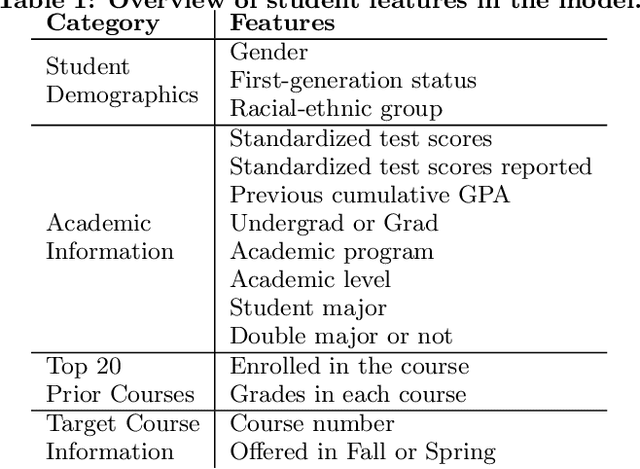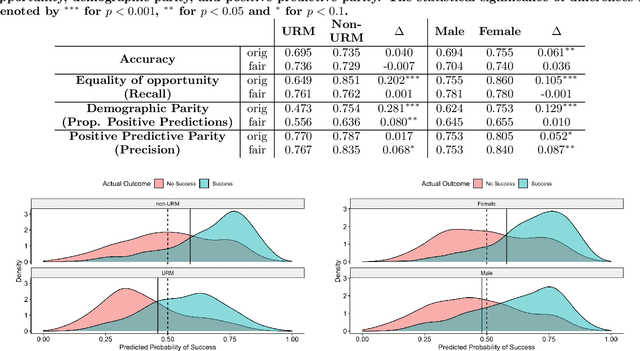Evaluation of Fairness Trade-offs in Predicting Student Success
Paper and Code
Jun 30, 2020

Predictive models for identifying at-risk students early can help teaching staff direct resources to better support them, but there is a growing concern about the fairness of algorithmic systems in education. Predictive models may inadvertently introduce bias in who receives support and thereby exacerbate existing inequities. We examine this issue by building a predictive model of student success based on university administrative records. We find that the model exhibits gender and racial bias in two out of three fairness measures considered. We then apply post-hoc adjustments to improve model fairness to highlight trade-offs between the three fairness measures.
* FATED (Fairness, Accountability, and Transparency in Educational
Data) Workshop at EDM 2020
 Add to Chrome
Add to Chrome Add to Firefox
Add to Firefox Add to Edge
Add to Edge